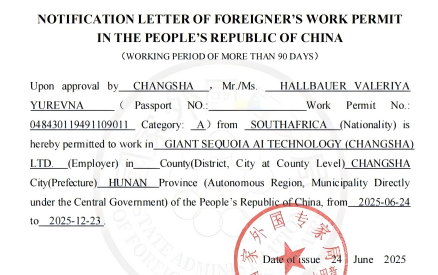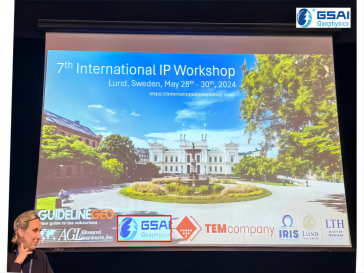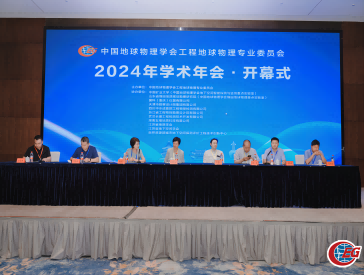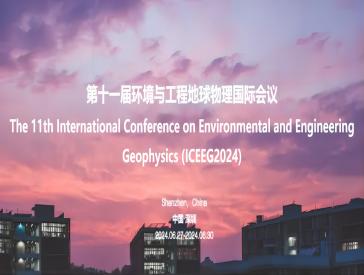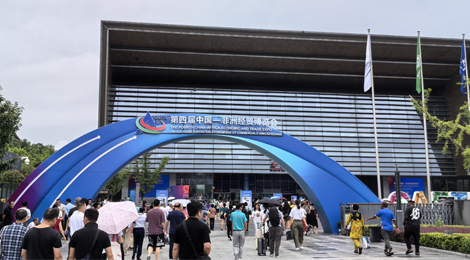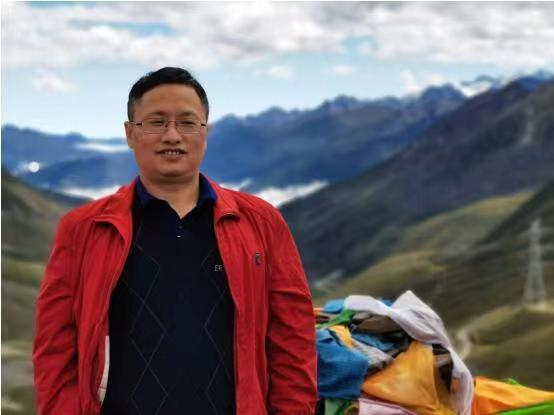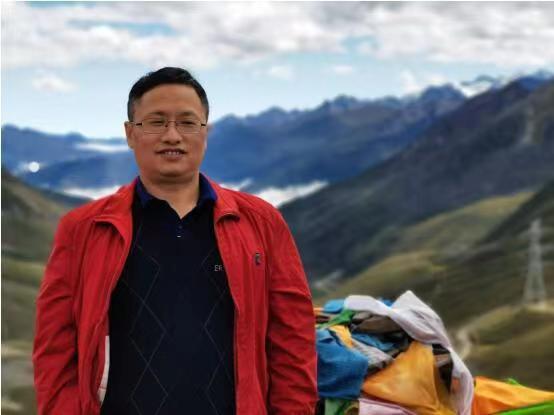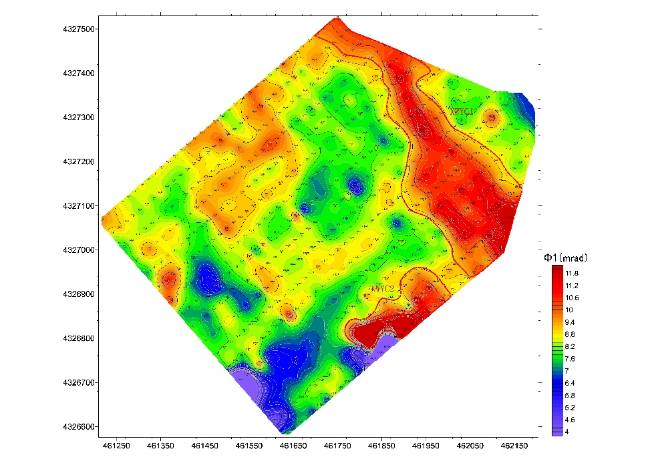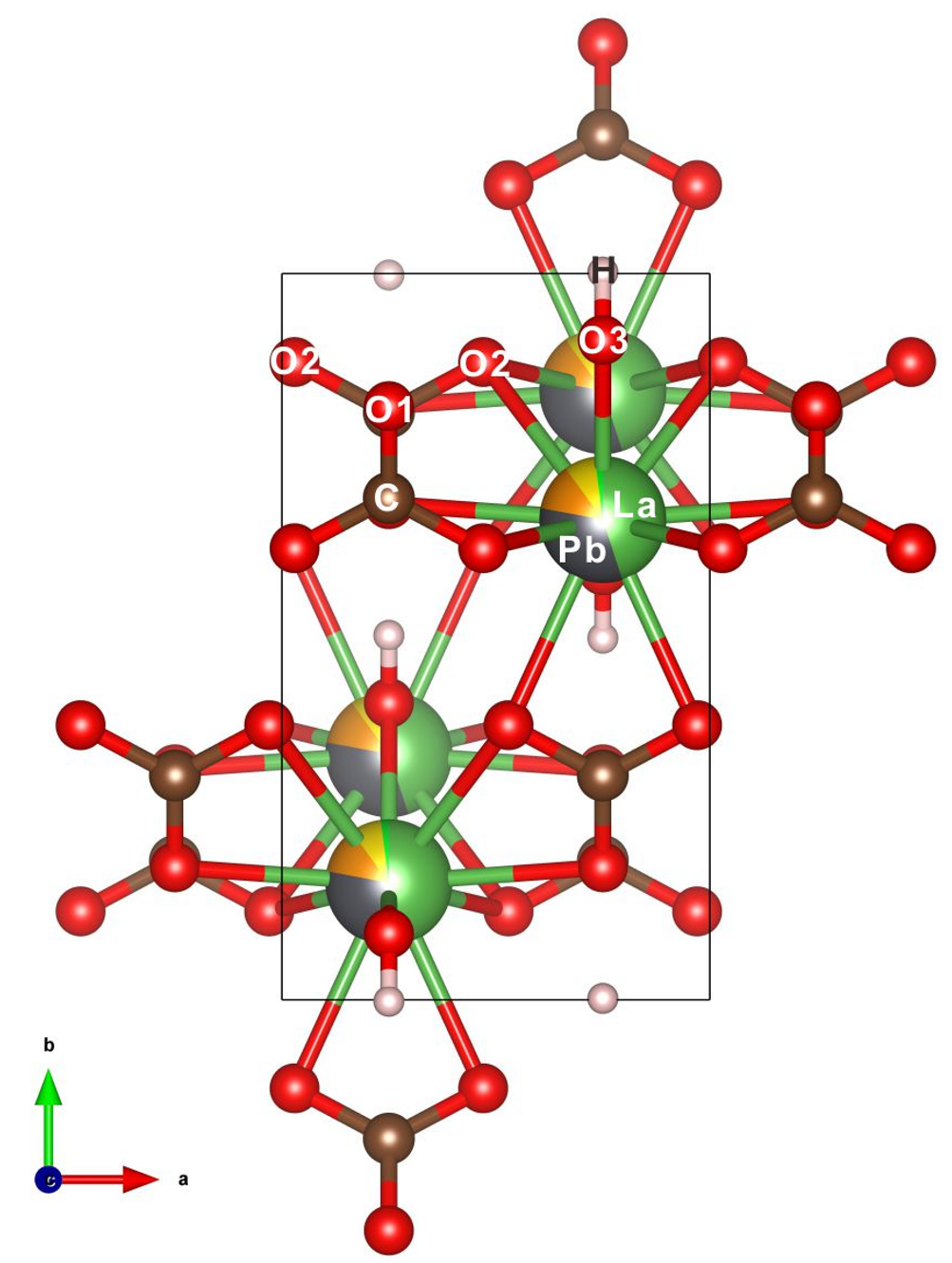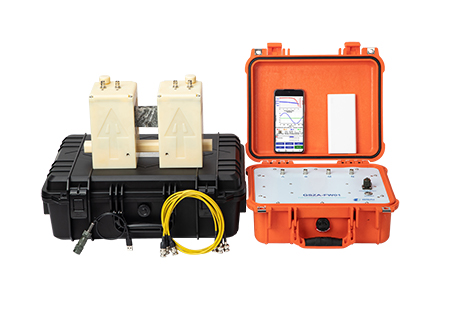GSAI Geophysics presented at the 2024 Academic annual meeting of the Engineering Geophysics Committee of the Chinese Geophysical Society
In order to fully display and exchange the latest research and technical achievements in the field of engineering geophysics in China, and promote industry innovation and discipline and technology development, the 2024 Academic Annual meeting of the Engineering Geophysics Committee of the Chinese Geophysical Society was held in the picturesque Yangzhou from July 27 to 29, 2024. GSAI Geophysics was invited to participate in the exhibition as a leader in instrument research and development in the industry, and showed up with our latest transient electromagnetic instrument and other instruments.
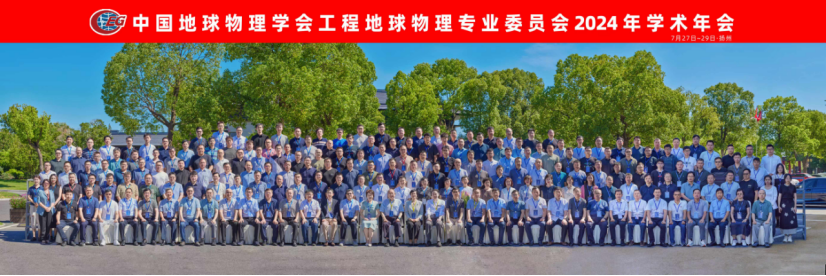
Group photo of all participants
The annual conference adopts a combination of keynote reports, paper presentations, poster reports and professional instrument equipment exhibitions and promotion to provide a platform for in-depth discussion and display for participants and professional instrument manufacturers. At the same time, domestic academates and well-known experts and scholars in related fields are invited to report the latest research results, which is convenient for colleagues to exchange and learn from each other.
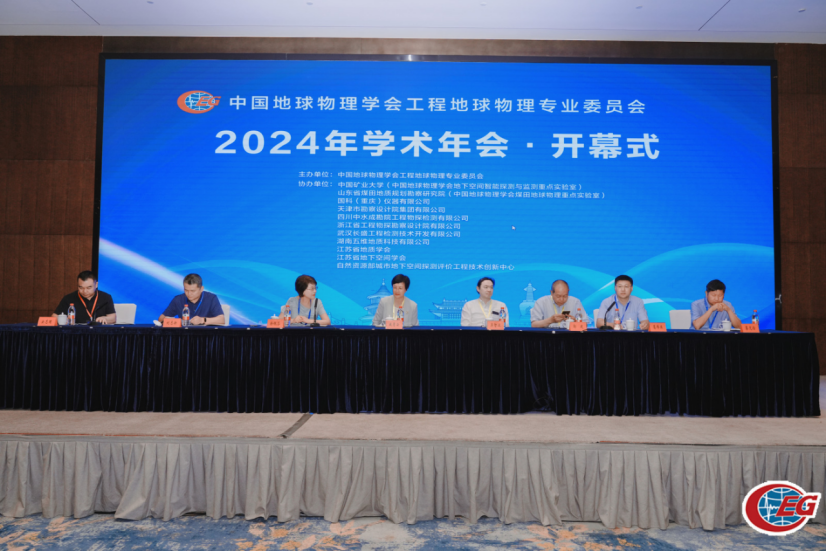
Opening Ceremony of the Conference
The theme of the annual conference is "Progress and Application of Engineering Geophysics Technology", focusing on but not limited to the following six topics:
1. New round of prospecting breakthrough strategic action and geophysics;
2. Key technologies of urban underground space utilization and geophysics;
3. Resources, disasters, environmental problems and engineering Geophysics;
4. Technical exchange topics for registered Geophysics engineers;
5. Artificial intelligence, machine learning and other cutting-edge technologies and engineering geophysics;
6. Engineering Geophysical exploration (inspection) method technology, equipment software and application.
The conference invited well-known scholars from universities and institutes across the country, as well as unit researchers and instrument manufacturers to discuss the strategic action of a new round of prospecting breakthrough, urban geological safety and risk prevention and control, and engineering geology and geophysics problems in infrastructure construction in key areas such as transportation, water conservancy and new energy, so as to help economic construction, social sustainable development and industry innovation.

Ms. Di Qingyun, Academician of the Chinese Academy of Sciences, delivered the opening speech (left) and Professor Wu Zhishen delivered the keynote speech (right).

Experts and scholars communicate at the booth
As a bright spot of the conference, GSAI with its cutting-edge geophysical exploration equipment stunning appearance. Among them, the GSZA-FW01 high-precision full-waveform impedance analyzer for rock ore specimens has won the warm attention of the participants for its accurate analysis ability of rock physical properties. GSEM-W10 broad-band magnetotelluric system, with its excellent electromagnetic field detection and imaging technology, shows a new height of deep geological structure detection; The GS2IP large depth spread spectrum IP imaging system, with its unique signal processing technology, has opened up a new application prospect in the field of mineral resources exploration.
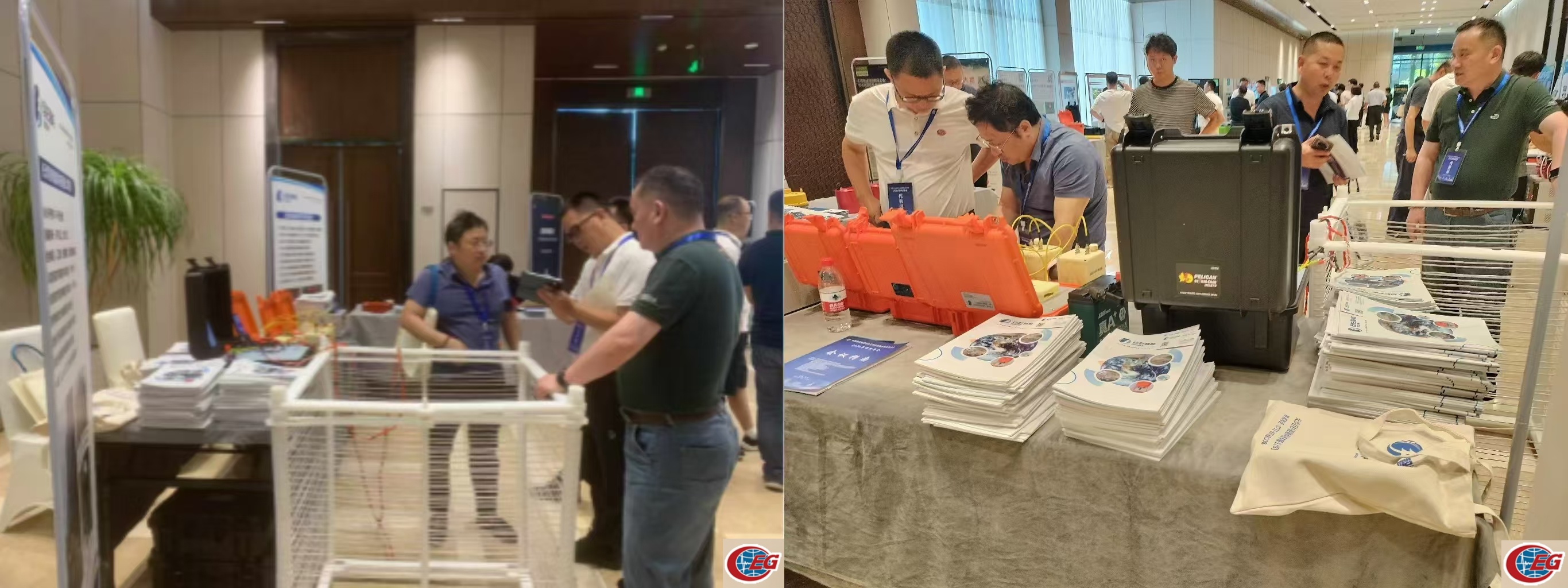
Associate Professor Chen Rujun introduced the newly developed MIMO-TEM instrument to the experts
What makes people shine is the latest MIMO-TEM transient electromagnetic instrument developed by GSAI. Its supporting three-dimensional large coil has attracted many experts and scholars. MIMO-TEM transient electromagnetic instrument adopts self-collecting mode to improve the quality of detection data, and can accurately explore shallow geological bodies. Its innovative design concept and excellent performance index have quickly attracted the strong interest and in-depth discussion of many well-known scholars and industry experts.
During the exhibition, the booth of GSAI became a popular area for communication. Associate Professor Chen Rujun of Central South University, as the technical consultant of GSAI, elaborated the technical details and design concept of the latest MIMO-TEM transient electromagnetic instrument to experts and colleagues with his profound academic foundation and rich practical experience, which won highly praise.

Closing ceremony of the academic Annual meeting
With the perfect conclusion of the award ceremony, the 2024 Academic Annual meeting of the Engineering Geophysics Professional Committee of the Chinese Geophysical Society has also come to an end. The successful conclusion of the annual conference marks the success of GSAI in further promoting the "going out" strategy of geophysical exploration instruments and technical services.
The Earth is a complex structure, and it is difficult for human beings to explore it for a long time. The shallow surface is an important area closely related to human production and life, and it is also one of the most complex, sensitive and fragile areas on the Earth. In recent years, with the rapid growth of population and the acceleration of global urbanization, human activities in shallow surface have increased significantly. GSAI will further help to promote the development of shallow surface geophysical technology in the direction of friendly and harmonious human settlement and environment.
Nowadays, multi-method and multi-discipline combination has become the main development trend. GSAI will achieve new breakthroughs in technology and improve the ability to solve complex problems. A single geophysical exploration can not meet the needs of the task, the use of a variety of geophysical methods joint exploration, combined with drilling, logging, geological and remote sensing data, the use of new data processing technology methods for comprehensive interpretation of underground targets, to achieve high precision deep detection will be the goal of our future development.
Author: Huang Sisi

